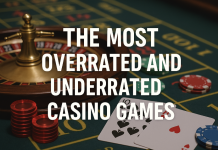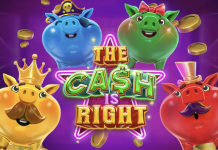How to Spot the Best RTP Slots for Maximum Wins
If you have ever played slots and wondered why some games seem to pay out more than others, the answer normally comes down to these three letters: RTP. Short for Return to Player, RTP is one of the most important but often overlooked parts of slot strategy.
Many players are drawn to flashy graphics, exciting features, or huge jackpots. But if you really want to make your bankroll last longer and increase your chances of winning, understanding RTP is essential. In this quick and easy guide, we’ll explain what RTP means, why it matters, and how to spot the best high-return slots for maximum rewards.
What Is RTP?
RTP stands for Return to Player, and it represents the percentage of total wagers that a slot game is expected to pay back to players over time. For example, a slot with an RTP of 96 percent will return an average of $96 for every $100 wagered.
It is important to note that RTP is calculated over the long term. You might win big or lose quickly in a single session, but over thousands of spins, the game will trend toward its stated return rate.
RTP is set by the game developer and is often verified by independent testing agencies to ensure fairness. When you Sign Up to reputable online casinos like Planet 7, you can trust that these percentages are real and regulated.
Why RTP Matters to Players
RTP gives you a clearer picture of how much risk you are taking when you play a slot game. The higher the RTP, the more money is theoretically returned to players over time. This does not mean you are guaranteed a profit, but it does mean your odds are better in the long run.
For example:
- A slot with 91 percent RTP means the house edge is 9 percent
- A slot with 97 percent RTP means the house edge is only 3 percent
That 6 percent difference can add up fast, especially during longer sessions. Choosing games with a higher RTP can help your money go further and give you more opportunities to win.
How to Find a Slot’s RTP
Not all slots display RTP clearly, so it helps to know where to look. Here are a few tips:
1. Check the Game Info or Paytable
Most online slot games have an “i” button or menu that opens up the rules and paytable. The RTP is often listed here, along with information about symbols, paylines, and bonus features.
2. Look for Game Reviews
Many slot review sites include detailed RTP breakdowns. If you are considering a new game, a quick search with the game name plus “RTP” can usually get you the number you need.
3. Browse the Casino’s Game Filters
Some online casinos (including Planet 7’s partners) offer filtering options or feature high-RTP games in specific categories. These can help you find top-performing slots faster.
High RTP Slots: What to Look For
So what qualifies as a high RTP slot? Generally speaking:
- Above 96 percent is considered good
- 97 percent or higher is excellent
- Below 94 percent is on the lower end
Classic three-reel slots often have simpler features and higher RTPs, while some modern video slots with huge jackpots may have lower base RTP to account for the prize pool. That does not mean one is better than the other—it just depends on your goals as a player.
If you want consistent returns and longer playtime, look for medium-volatility, high-RTP games. If you are chasing a big payout and do not mind the risk, even a lower RTP game could deliver if the timing is right.
A Quick Note About Volatility and RTP
RTP is not the only factor that affects your wins. You also need to understand volatility, which describes how often and how big a slot tends to pay out.
- Low volatility slots offer frequent but smaller wins
- High volatility slots offer fewer wins, but with bigger potential payouts
Some high-volatility games still have good RTPs, but they may feel “cold” for long stretches. If you are playing with a limited bankroll or prefer steady action, combining high RTP with low to medium volatility is often the best approach.
Examples of High RTP Slot Styles
To help you get started, here are a few types of slots that are known for offering high returns:
Classic Fruit Slots
These often come with a high RTP due to their simplicity. They do not have big bonus rounds or progressive jackpots, but they tend to pay more steadily. Ideal for players who enjoy traditional gameplay and a slower burn.
Skill-Based Bonus Slots
Some modern video slots include interactive bonus rounds where your decisions impact the outcome. These often offer RTPs over 96 percent and give you more engagement per spin.
Feature-Rich Slots with Static Jackpots
Games that include free spins, wilds, and multipliers but without a progressive jackpot often strike a balance between excitement and value. Many of these sit comfortably in the 96 to 97 percent RTP range.
Don’t Let Design Distract You
Flashy graphics and exciting animations can make a slot look more appealing, but they are not always tied to better returns. A well-designed slot might still have an RTP of 92 percent, while a less polished game could pay out more often.
The key is to look past the visuals and check the numbers. That one step can mean the difference between a game that eats your bankroll and one that keeps the wins coming.
Conclusion
Finding high RTP slots is not about chasing guaranteed wins. No slot can promise a payout on any given spin. But over time, playing smarter by choosing better-paying games gives you more chances to enjoy the ride and possibly walk away ahead.
At Planet 7, we offer a wide variety of slots with competitive RTPs, so whether you like classic three-reel games or modern feature-packed reels, there is always something worth spinning.
Before you hit that spin button, take a moment to check the RTP. Your balance and your experience will thank you.




